Peace and Spring Auspices Album
(平安春喜图册 / Píng’ān Chūn Xǐ Tú Cè)
—A Qing Dynasty Masterpiece by Dong Gao (董诰, 1740–1818)
Overview
This 10-panel silk-scroll album, created during the Qianlong-Jiaqing reigns (late 18th–early 19th century), celebrates the harmony of nature and imperial auspiciousness through the motif of magpies (喜鹊, xǐquè). Painted by Dong Gao, a renowned court artist and statesman, the work blends meticulous gongbi (工笔, fine-line technique) with symbolic compositions. Each panel pairs magpies—emblems of joy and marital bliss—with winter flora like plum blossoms, bamboo, and pine, embodying resilience and renewal. Currently housed in the National Palace Museum, Taipei, it exemplifies Qing imperial aesthetics and Confucian-Daoist ideals of cosmic order.
Translation & Cultural Context
Album Structure
- 梅石群鹊 (Magpies Amid Plum Blossoms and Rocks)
- Translation: Magpies perch on plum branches and rocks, symbolizing perseverance rewarded by fortune.
- Symbolism: Plum blossoms (梅, méi) represent endurance in adversity; rocks (石, shí) signify steadfastness.
- 梅竹双鹊 (Magpies Among Plum and Bamboo)
- Translation: A pair of magpies nestles between plum and bamboo, evoking the phrase “節節雙喜” (jié jié shuāng xǐ, “Double Joy with Each Segment”).
- Cultural Note: Bamboo’s segmented stalks (節, jié) pun on “festival,” while magpies (喜鵲, xǐquè) symbolize good news.
- 朱竹飞鹊 (Magpies Soaring Over Crimson Bamboo)
- Translation: Red-dyed bamboo (朱竹, zhū zhú), a rarity in nature, signifies imperial authority. Magpies in flight evoke celestial blessings.
- 喜鹊栖松 (Magpies Perched on Pine Trees)
- Translation: Pine (松, sōng), a symbol of longevity, frames magpies as harbingers of enduring happiness.
- 冬卉喜鹊 (Magpies Among Winter Flowers)
- Translation: Winter blooms (冬卉, dōng huì) like camellias and narcissus represent hope amid cold, paired with magpies as omens of spring’s return.
Artistic Significance
- Gongbi Technique:
- Dong Gao’s brushwork captures the iridescent feathers of magpies and delicate petals with mineral pigments (e.g., azurite for pine needles, cinnabar for bamboo).
- Imperial Propaganda:
- Commissioned for the Qing court, the album aligns with Emperor Qianlong’s patronage of auspicious art (吉祥圖), reinforcing the dynasty’s mandate through natural harmony.
- Philosophical Themes:
- The interplay of magpies and flora reflects Confucian ideals (天人合一, “unity of heaven and humanity”) and Daoist reverence for cyclical renewal.
Artist Background
Dong Gao (董诰) served as a Grand Secretary under Emperors Qianlong and Jiaqing. A scholar-painter, he co-edited the Siku Quanshu (四库全书), China’s largest literary compilation. His landscapes and floral works, though less documented than his political career, epitomize Qing court artistry.
Global Parallels
- Compare to Japanese kachō-ga (花鳥画, flower-and-bird prints), yet distinct in its narrative sequencing and imperial symbolism.
- Similar to European vanitas still lifes but focused on optimism rather than mortality.
Legacy & Accessibility
- Digitized by the National Palace Museum, Taipei, for global study.
- Exhibited in 2023’s Bordercrossing: Possibilities and Interactions (Yuz Museum, Shanghai), bridging traditional and contemporary art.

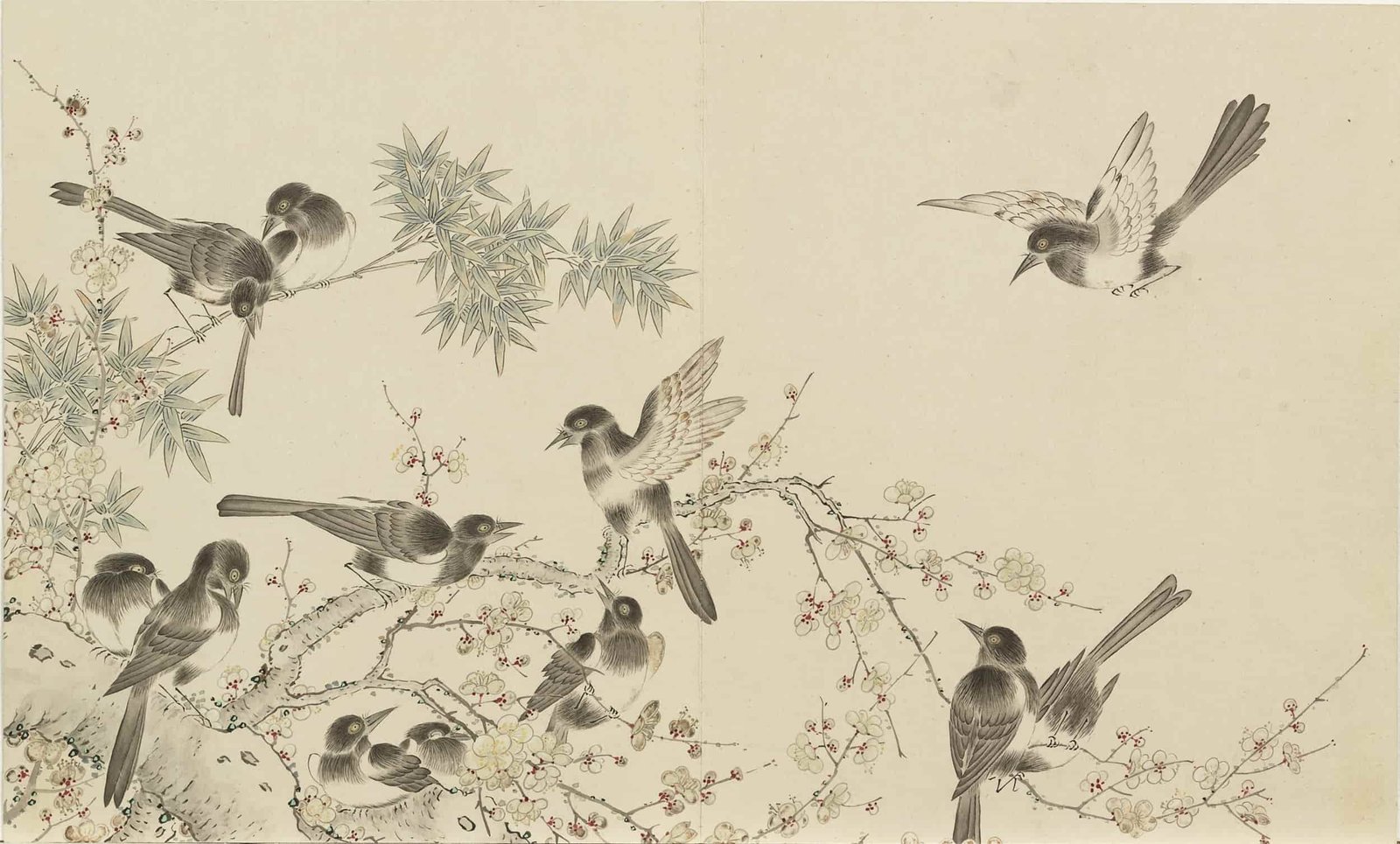
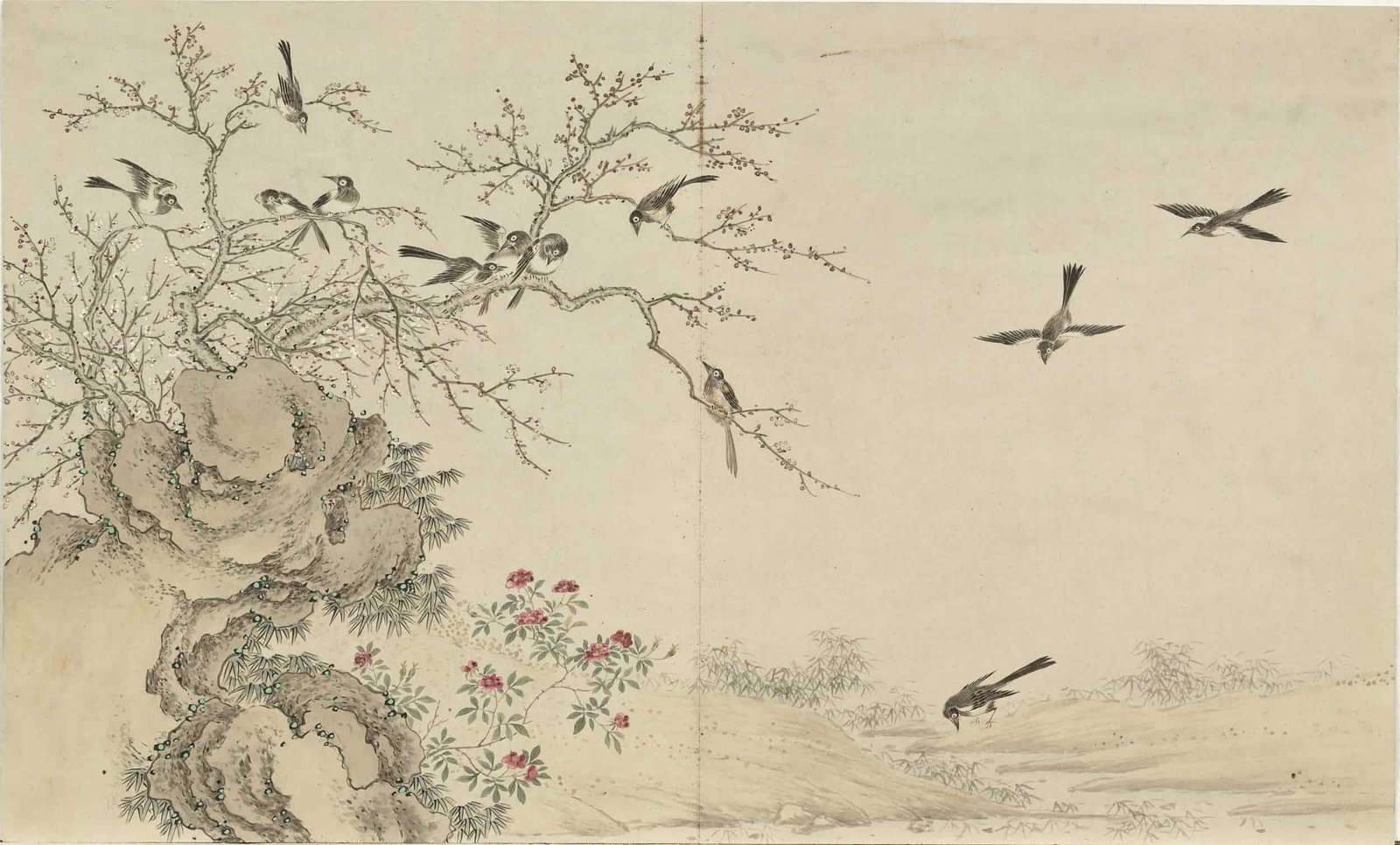
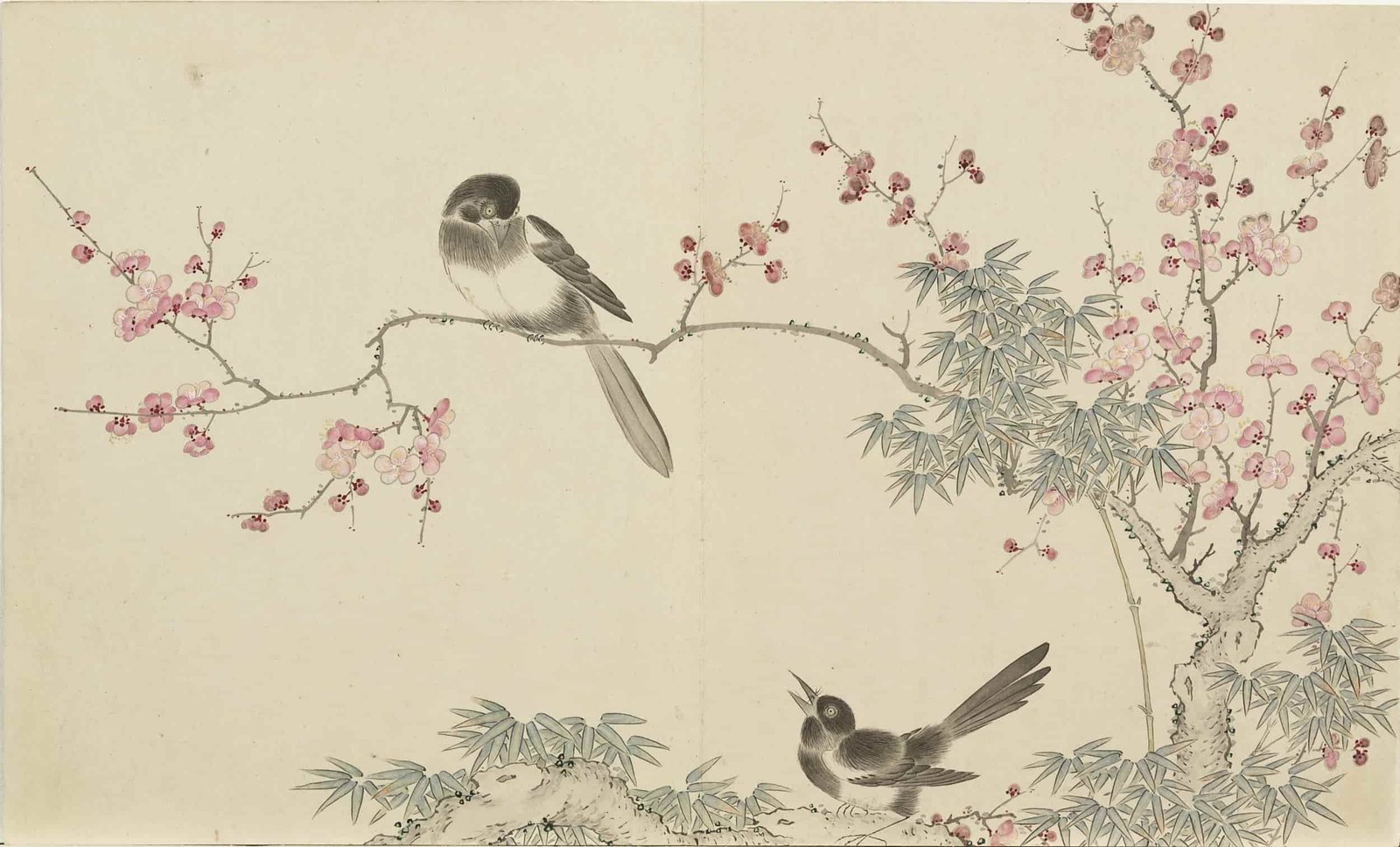
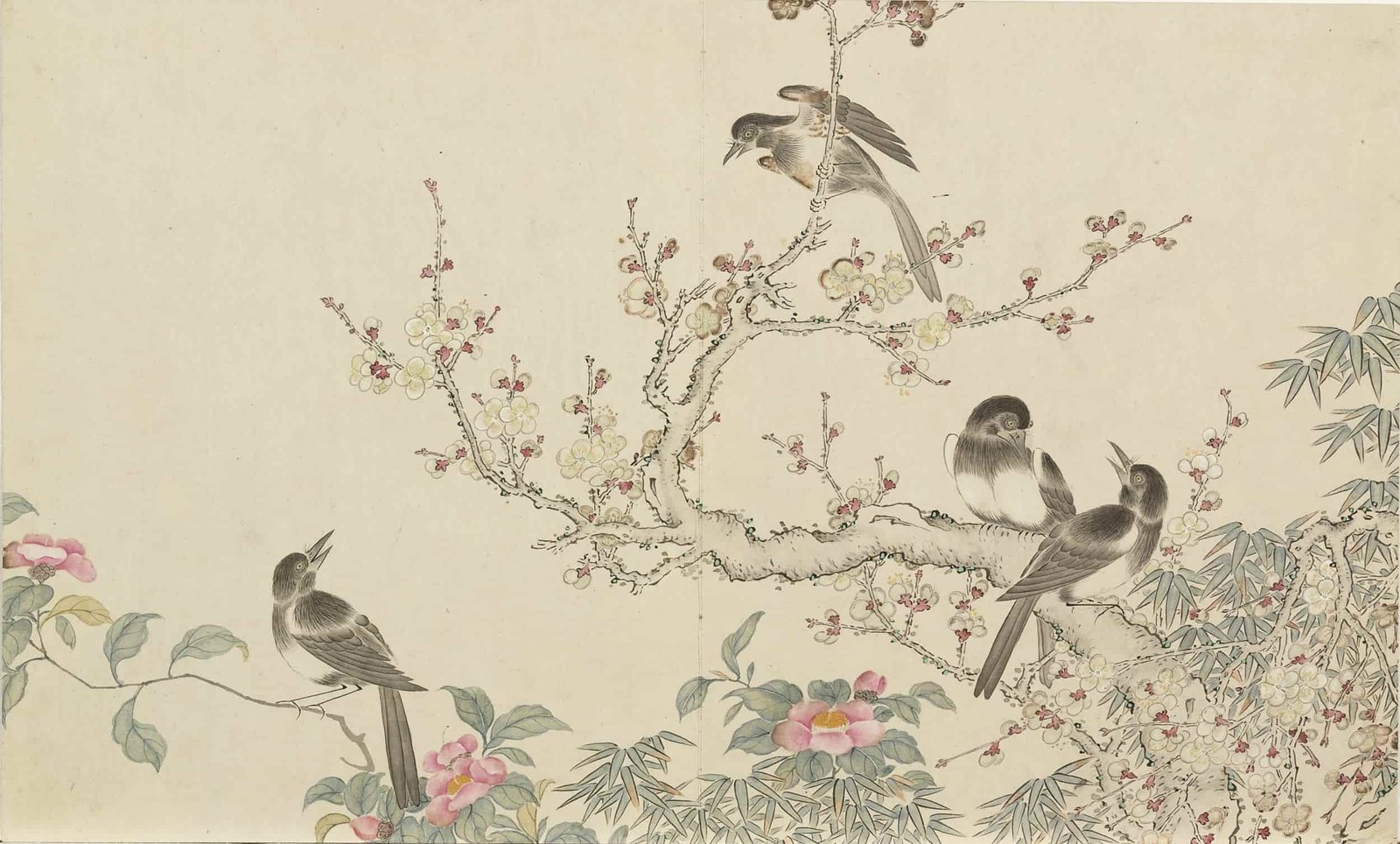
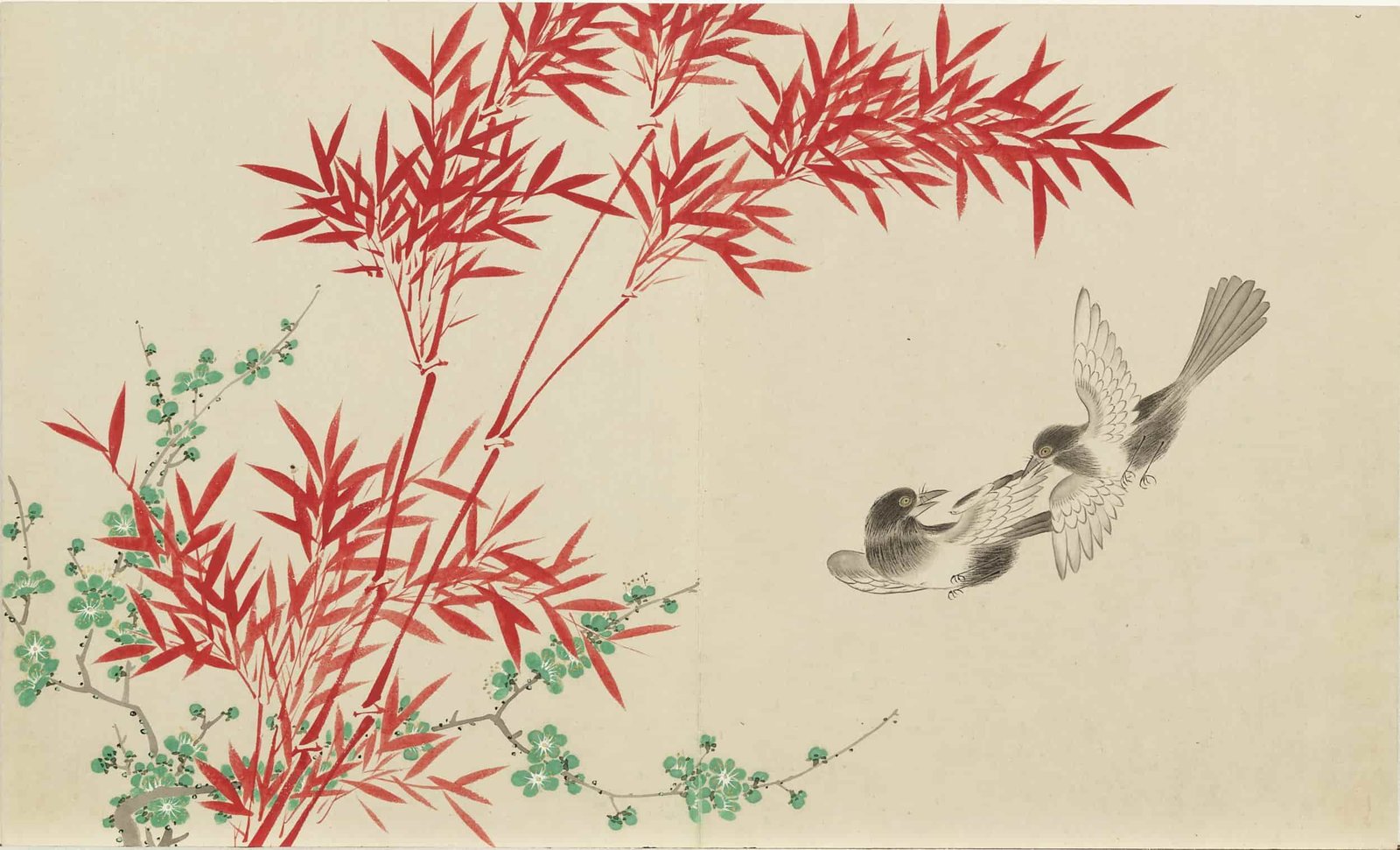
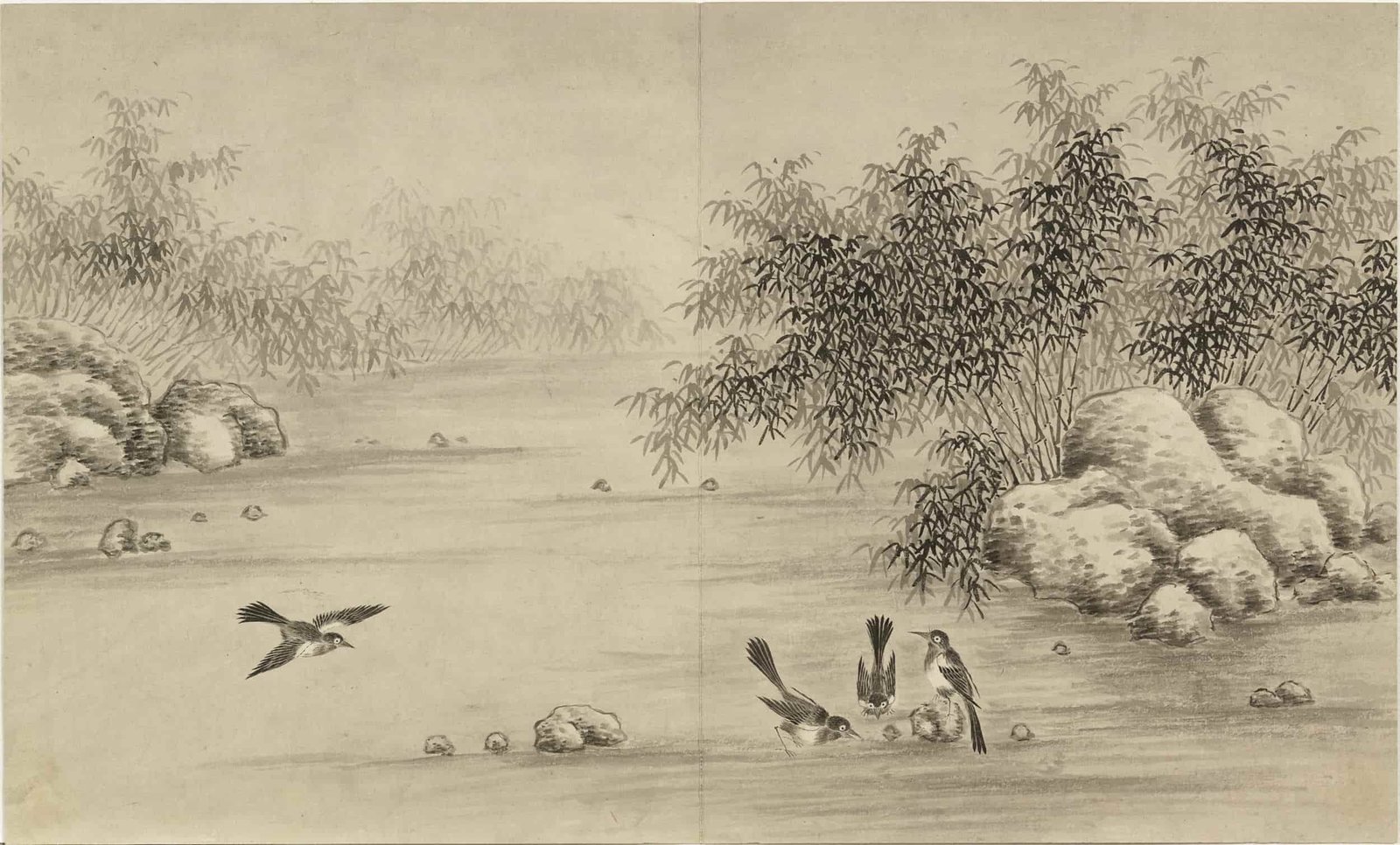
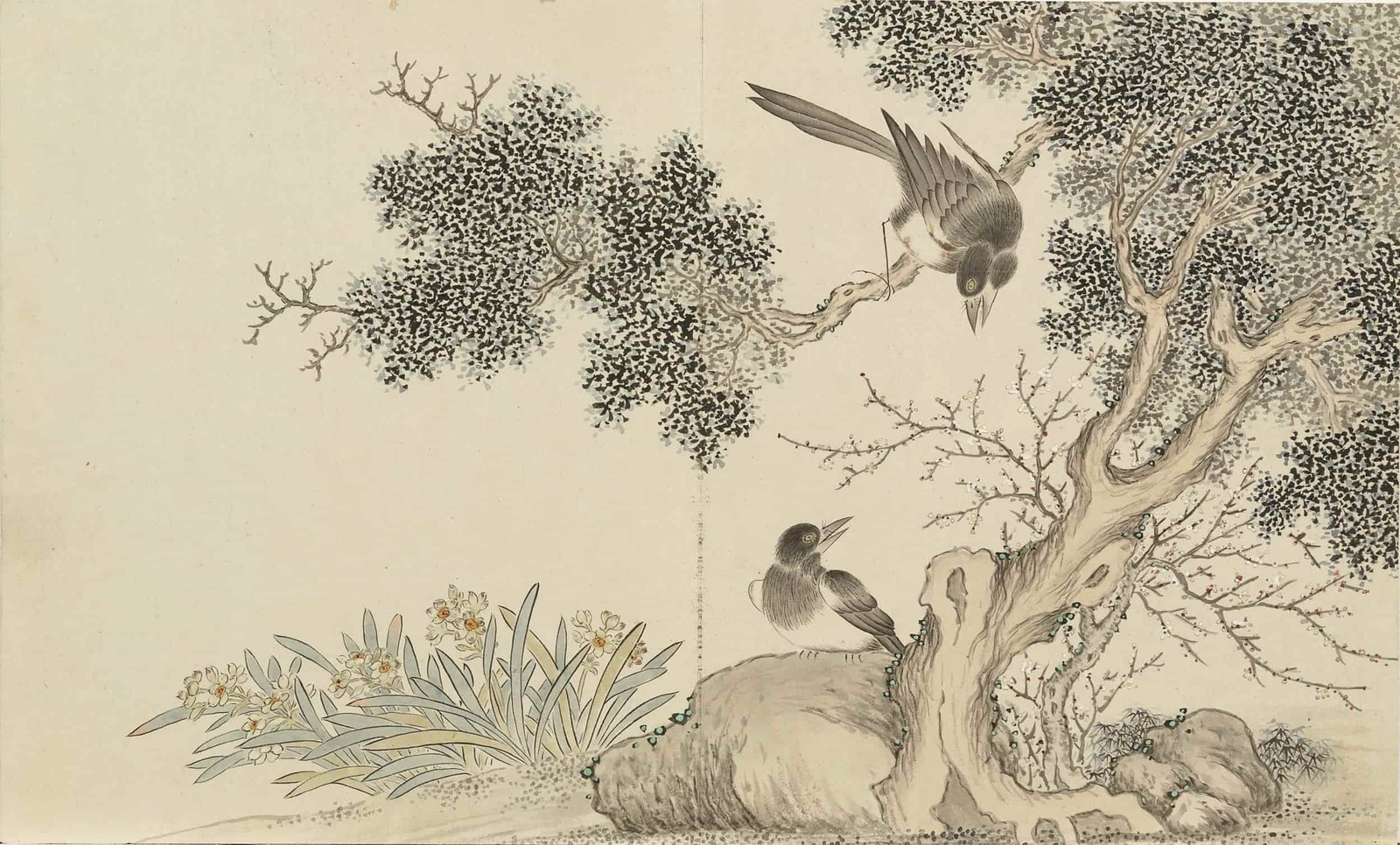
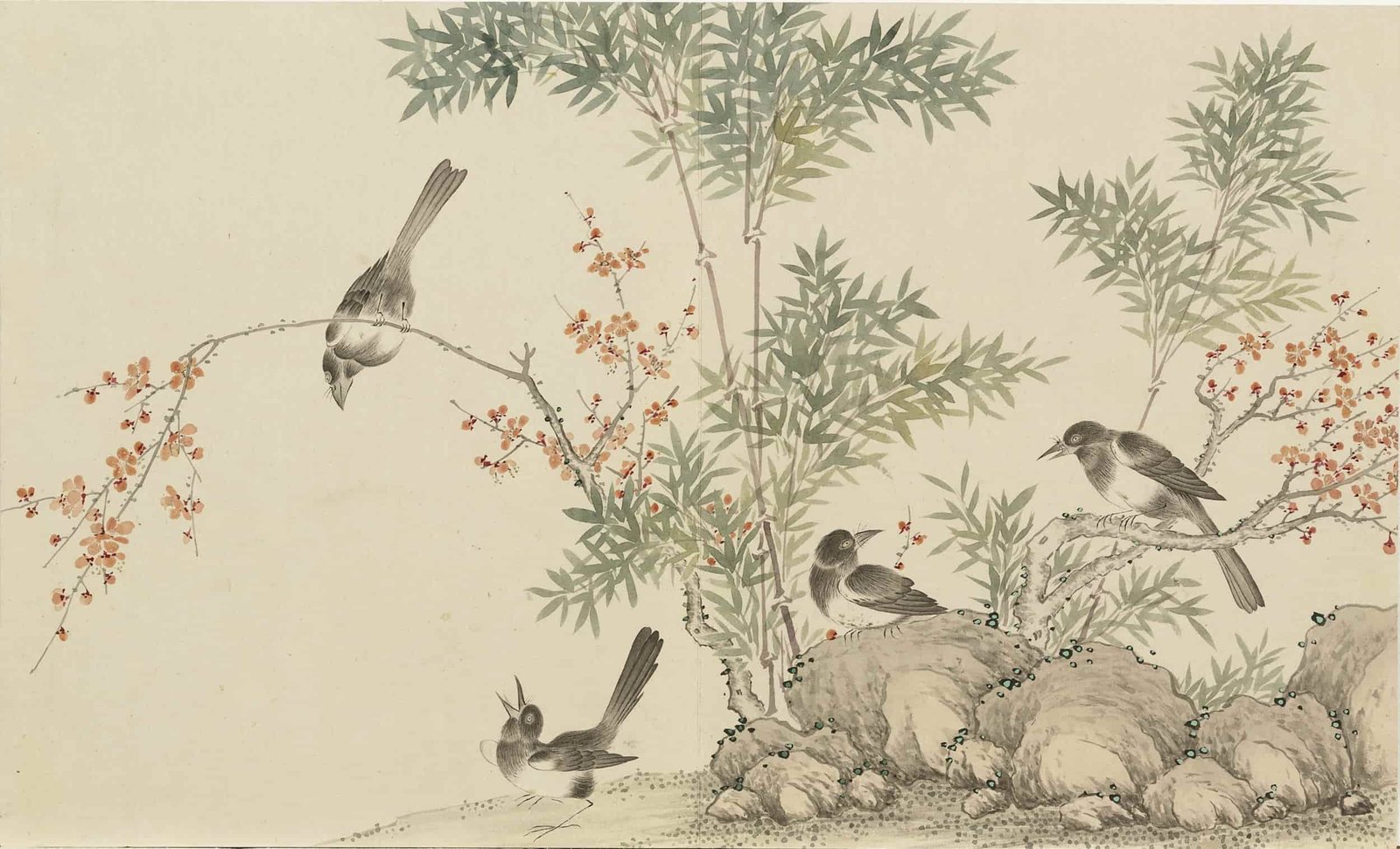
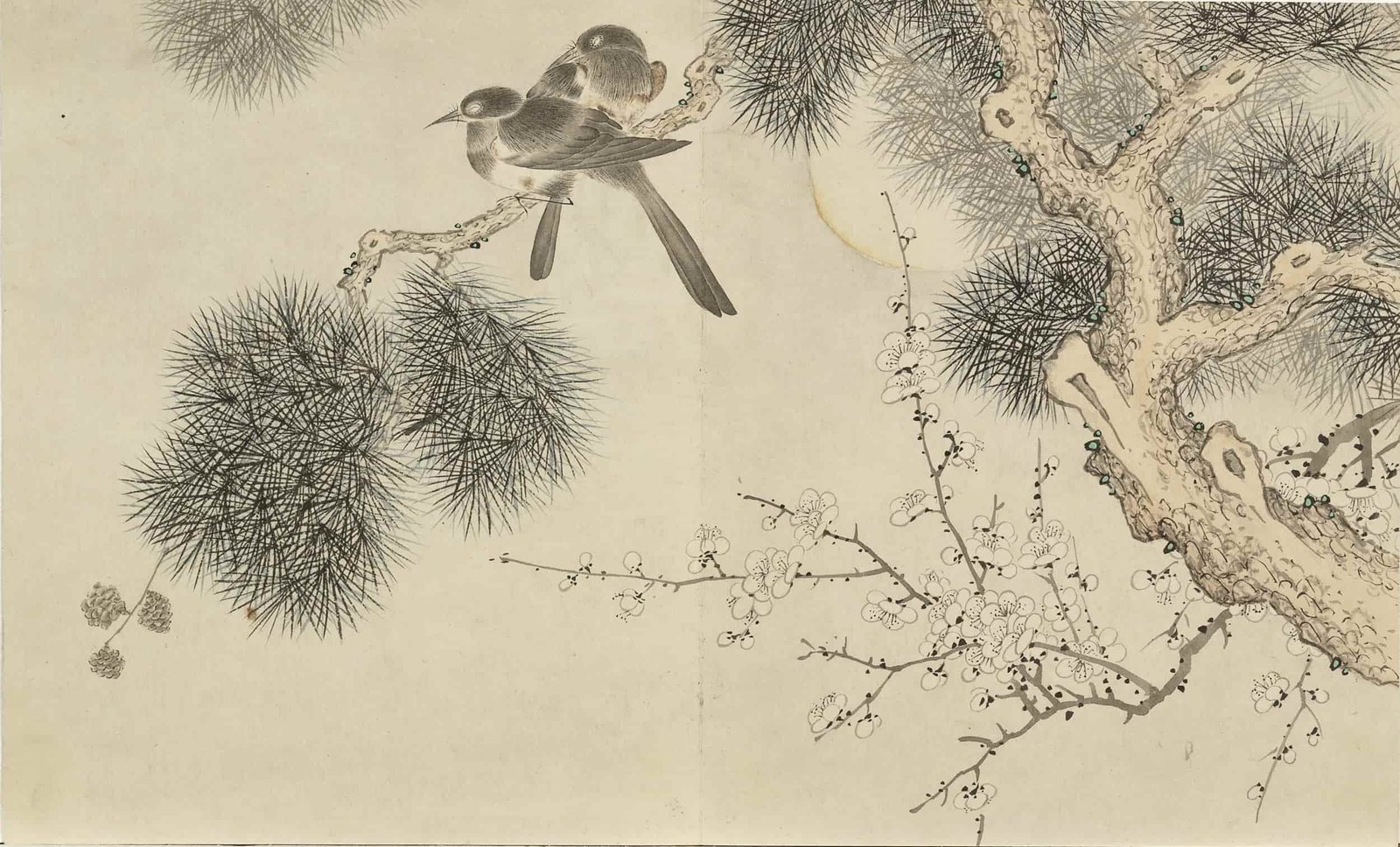
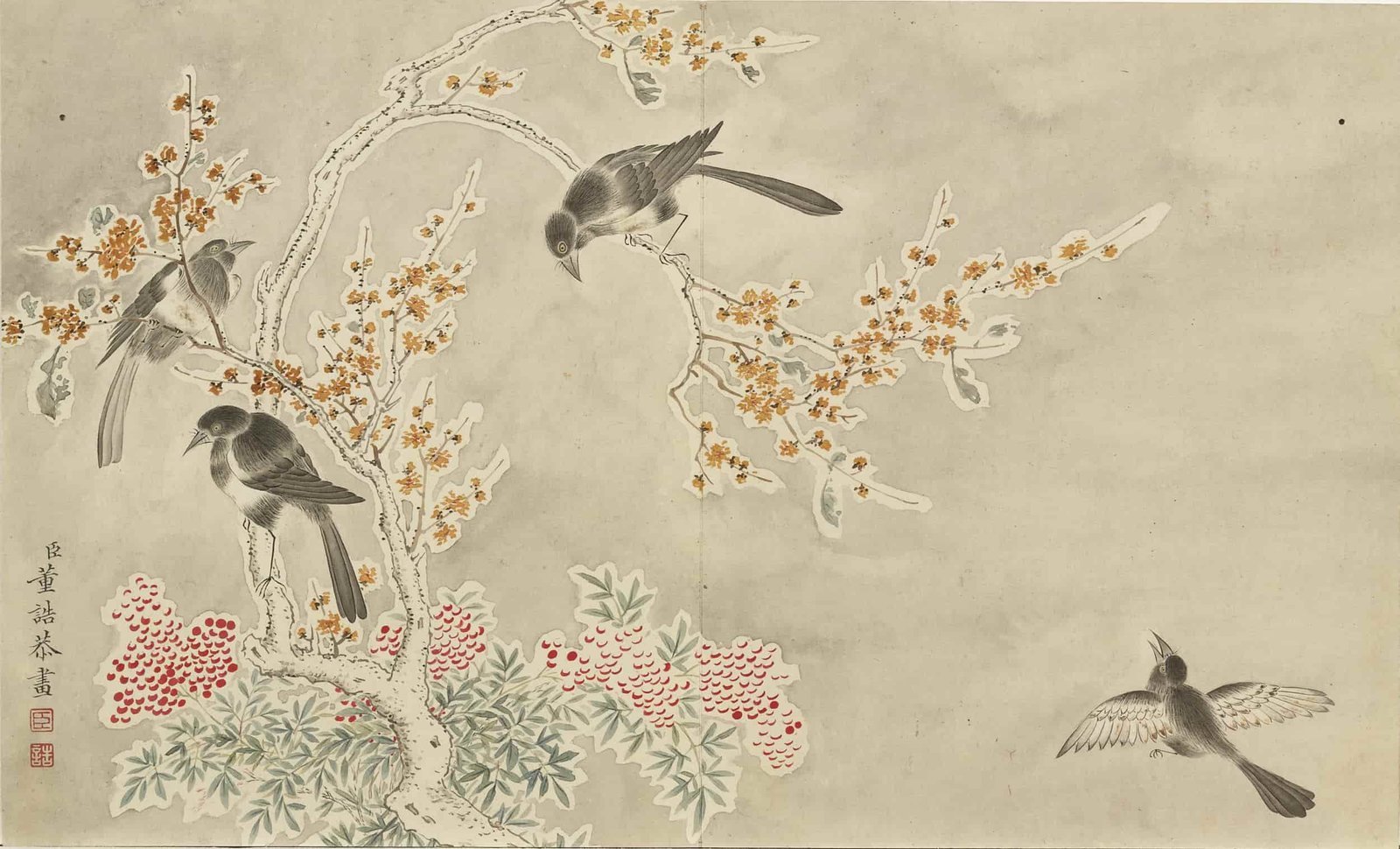
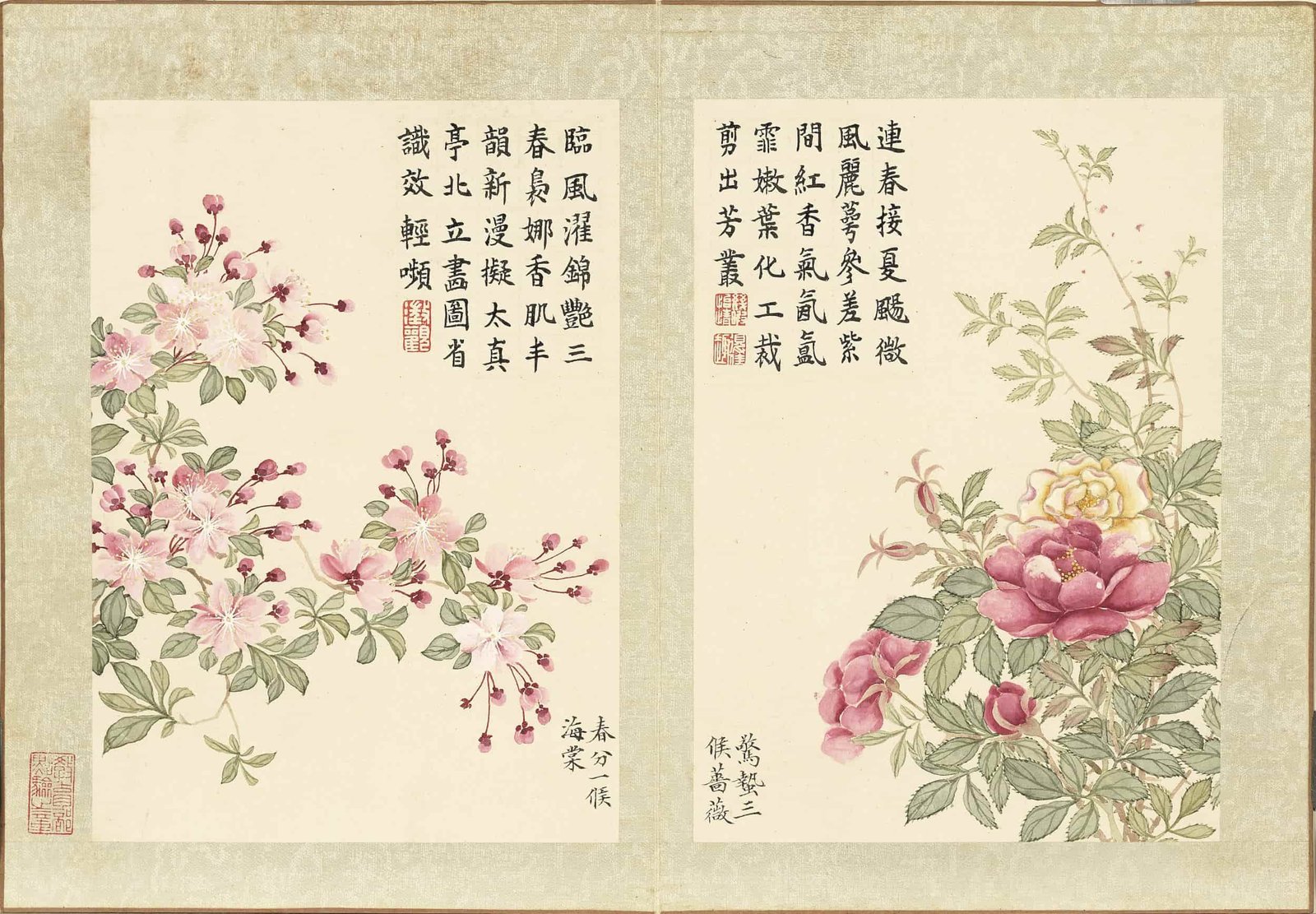
评价
目前还没有评价